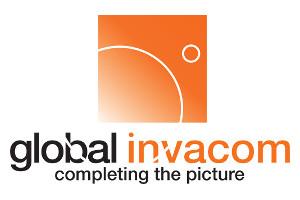Features
[New Idea] Global Invacom- Space for both value and growth

It’s been a while since I start looking at small cap ideas in the local space, and even a longer time that I had felt so excited to go deep into the night to research and write out the thesis.
For sharing purposes, do let us know your views in the comments section. And pls join our telegram channel
DISCLAIMER: THIS IS NOT A RECOMMENDATION. PLS CONSULT YOUR OWN FINANCIAL ADVISER AND/OR DO YOUR OWN DUE DILIGENCE.

What is interesting in 1 minute?
- Net cash of S$0.036/share forms 35% of the market cap;
- Free cash flow yield of 18-27% per annum over last 2 years (so 2 more years to a totally “free” company backed by net cash?);
- A positive earnings outlook with likely margin expansion for FY2021?
- Local Proxy to the increased spending in satellites-‘Space Race’ on the back of rising demand for increased connectivity esp in areas where it’s not easily accessible and with the rise of remote working.
Our View: Global Invacom offers both a value as well as a growth angle for investors.
- From a value perspective, the Group is trading at just 0.5x P/B (or 0.65x P/Tangible Book if you want to be conservative). Of which, net cash forms about S$0.036/share or 35% of the current market cap which will help to support its valuation. Its free cash flow yield is also very strong, having generated US$3.9-5.8m/year over the last 2 years, translating to a FCF yield of 18.4%-27.5%. This, in our opinion, is also very sustainable, as the Group’s depreciation and amortization already form US$5.7-6.6m/year translating to about 30% market cap each year. The Group’s CAPEX has ranged from US$1.5-US$3.3m/year (excluding any M&A), and we believe it will maintain at that level or even lower, following the Group’s strategy shift in Asia towards an asset-light model, outsourcing its manufacturing in Asia to a third party vendor.
- On the earnings front, as one of the leading suppliers for the satellite communication industry, Global Invacom is riding on the increasing investment in satellites driven by the demand for increased connectivity and space race among major companies such as Alphabet, Elon Musk, and Amazon. Looking into FY21, we believe, there is a reason for optimism, as the Group’s major market (~70% of revenue) is in the US, where the COVID-19 pandemic is gradually coming under control due to the mass vaccination program. In addition, of note, the annualized cost savings from the manufacturing outsourcing to third party vendor will also kick in, following its completion in June 2020. From the 2HFY2020 results, the cost savings may be massive, as, despite a 20% drop in revenue, gross profit was up 48% YoY (Gross profit was even US$1m more than 1HFY2020 despite lower revenue), although part of it was attributable to better product mix.
_______________________________________________________
Global Invacom
Listed in the UK (AIM) and SG (SGX)
Price: S$0.102
Market Cap: S$27.7m
What is interesting?
- Attractive valuation: At S$0.102, Global Invacom is trading at 0.45x P/B (NAV:S$0.228). If we were to be more conservative, let’s strip out Goodwill, intangible assets and right-of-use assets, and the stock will be trading at 0.65x P/Tangible book, still not too bad. (Tangible NAV: S$0.156)
- 35% of market cap backed by net cash (US$7.4m or S$9.8m) Of the assets, Net cash is S$0.036/share (35% of market cap, and 22.9% of tangible net asset value).

- Super strong free cashflow generation (18-27% FCF yield over last 2 years)– over the last 2 years, the Group has generated FCF of US$3.8-5.8m. With already 1/3 of its current market cap already backed by cash, technically we need only 2 years before the entire market cap can be backed by cash, assuming no M&A during this period.
-
- Most importantly, while it’s not showing in profits, its Depreciation and amortization alone is already 27-30% FCF yield. If we just use CF from depreciation and amortization alone less CAPEX, the FCF yield is 6-17% over the last 4 years (assuming they make 0 profit, and no loss.
- Its CAPEX has hovered around US$1.5-2m/year over the last 4 years except for FY2019 where CAPEX is US$3.3m, which we assume may be due to the Group prepping to relocate its factory from Shanghai to the Philippines.

*The right of use assets pertains to depreciation of office premises & warehouses, machinery, motor vehicles etc (about US$2+m/year)
-
- In 2019, the Group announced a shift in strategy towards a more asset-light approach towards manufacturing in Asia, which will see nearly half of its manufacturing is outsourced to a third-party provider in the Philippines. We believe this may likely suggest CAPEX maintaining at current or even lower levels, which may support the Group’s strong free cash flow generation and profitability in the years ahead.
- In 2019, the Group announced a shift in strategy towards a more asset-light approach towards manufacturing in Asia, which will see nearly half of its manufacturing is outsourced to a third-party provider in the Philippines. We believe this may likely suggest CAPEX maintaining at current or even lower levels, which may support the Group’s strong free cash flow generation and profitability in the years ahead.
-
Proxy to increased connectivity and the ‘space race’. Thanks to its various acquisitions over the years and continued commitment to R&D, Global Invacom is a leading provider for SatCom products and the only full-service outdoor unit developer, manufacturer, and supplier of satellite antenna products for Ku- and Ka-band frequencies in the world. As the demand for data and connectivity grows, Global Invacom is optimistic that its products will play an important role in meeting this demand as service providers adopt satellite solutions. The Group believes the new ‘space race’ by major companies such as Alphabet, Tesla’s Elon Musk, and Amazon’s Jeff Bezos, to launch Low Earth Orbit (“LEO”) satellites to transform internet connectivity worldwide, will benefit the DOS sector and consequently Global Invacom- which is one of the leading suppliers for components to the sector.

- According to Morgan Stanley, satellite broadband is the future of the US$1T space economy as “Satellite broadband constellations will slash the cost of data just as demand explodes from new IoT and cloud-related tech”. The race to build satellite constellations that deliver low-cost, high-speed internet is fuelling astronomic growth in the global space economy, which is projected to be worth US$1T by 2040, and Satellite internet will account for 50-70% of the market’s growth.
- LEO satellites orbiting closer to Earth are less expensive and allow a minimal delay between data leaving the satellite and reaching users of smartphones and GPS communications.
- Medium Earth Orbit (“MEO”) satellites are becoming increasingly attractive for many applications as they provide lower latency and higher bandwidth access than geo-stationary satellites (“GEO”) and have greater longevity than LEO satellites. The acceleration in satellite activity worldwide has triggered more demand for DOS products.
- Musk’s SpaceX launched the first 60 Starlink satellites in 2019 and expects to build a ‘mega-constellation’ of up to 12,000 satellites by 2027.
- Amazon intends to deploy over 3,000 internet satellites as part of Project Kuiper.
- UK’s Oneweb plans to launch 648 constellation by end of 2022.

-
- Global Invacom’s Data Over Satellite (DOS) segment has helped to support the revenue of the Group, offsetting the decline in its Direct-to-home satellite (DTH) segment, which serves mainly the satellite TV customers. Revenue from DOS has likely overtaken DTH as the largest revenue contributor of the Group (more than 50%) in FY20 and will be the Group’s main focus going forward.
Likely strong earnings rebound in FY2021.
There are a few reasons for optimism for FY2021 results.
- Recovery in US. Global Invacom derives nearly 70% of its revenue from the US. While the Group was identified as an essential supplier, the pandemic has affected some of its end customers’ planned rollout of communication services and networks. This, together with component shortages, disrupted design resources and the lack of consistent availability of logistics has resulted in reduced shipments to its customers. With the US pandemic gradually coming under control with the mass vaccination program, hopefully, we can see a recovery in demand for Global Invacom.
-
- If you refer to the table below, 2H tends to be a seasonally weaker half for Global Invacom. The extent of the drop in revenue in 2HFY2020 is less than 1HFY2020 at the depths of the crisis. The Group also mentioned that it recorded 3 out of 4 quarters of profitability, suggesting improving fundamentals from 2HFY2020 and that the worst could be over for them.
- Cost savings from the relocation of manufacturing facilities from China to the Philippines. Following a major strategic review, the Group had relocated its manufacturing operations from Shanghai, China to a third-party vendor in the Philippines for the manufacturing and assembly operations. According to its AR2020, “This transition was completed in the first half of 2020 and is expected to deliver meaningful annualized savings in 2021 and beyond while reducing the Group’s exposure to trade disputes between the US and China.”.
-
- Given that the transition was completed in June 2020, technically we should be able to see the impact of the cost savings in 2H. Unfortunately, Global Invacom’s results were affected by the COVID-19 which saw 2H2020 revenue dropped 19% YoY to US$50.3m, as the pandemic has impacted the ability of the Group’s end customers to rollout the communications services and networks that were originally planned for 2020.
- The full impact of the efficiency was also affected with the efficiency of its production facilities also negatively impacted as they adapted to social distancing and other international COVID-19 best practices.
- Nonetheless, it is worth noting that despite the drop in revenue, 2H2020 Gross profit increased due to an increase in gross profit margin to a record high over the last few years of 26.5%. The Group attributed it to “a more profitable product mix, manufacturing efficiencies and cost reduction programs”. The increase in gross profit in 2H was US$4.4m (a 48.6% yoy increase! It is even 1m higher than 1H2021 despite 2m lower in revenue in 2H)


- The move to the Philippines is also part of the Group’s strategy to move towards an asset-light production & assembly. With the shift, nearly 50% of the Group’s production will be via the third-party manufacturer in the Philippines. Hence, does that also mean lower CAPEX in the future and more cashflow generation?
-
Following the relocation, the number of employees has also fallen by more than 40% to 377 at end of FY2020.

-
More about Global Invacom- pls visit their website
Global Invacom Group Limited (“Global Invacom” or the “Group”) is one of the world’s leading satellite communication ground equipment solution providers. It has 73 patents (further 27 pending and 9 applied for).
Customers:
- Some of the world’s largest suppliers of Direct to Home (“DTH”) television services (eg. Sky in UK, Shaw in Canda, Astro in Malaysia, Dish Network in US) and
- Data Over Satellite (“DOS”) services (eg. Hughes Network Systems, Viasat, Gilat and ST Electronics/iDirect)
Services:
Creates and provides a full range of dish antennas, low noise block receivers, transmitters, fibre distribution equipment, switches, and video distribution components within the satellite communications ground equipment market, as well as related products for the healthcare and defence sectors.
The Group was identified as an essential supplier for its supply of equipment to the communications, healthcare, and defence markets.
The Group’s satellite products are classified into 2 segments:
- Direct-to-Home Satellite (“DTH”)
Main products include LNBs (universal and customer specific), digital channel stacking switch (“DCSS”) LNBs (both universal and specific), Ku dish antennas, and mounting systems, fibre links and distribution systems. The largest revenue is generated by customer-specific DCSS LNBs.
- Data Over Satellite (“DOS”)
The Group offers total DOS reception and transmission system or terminal solution. Beyond the ability to offer reception-only LNBs and antennas for DTH, the Group is now able to extend this same unique capability to the DOS market, helping to maintain its leading position in this sector, especially in emerging markets. Global Invacom is currently developing new DOS products in line with the requirements of our customers, both existing and new, for launch over the forthcoming years.
Customers include service providers, satellite owners as well as aggregators or company-specific specialists.
For our more info on markets and access to stock research, pls open a trading account with our preferred broker or subscribe to us. PM @moneyplantt on telegram





